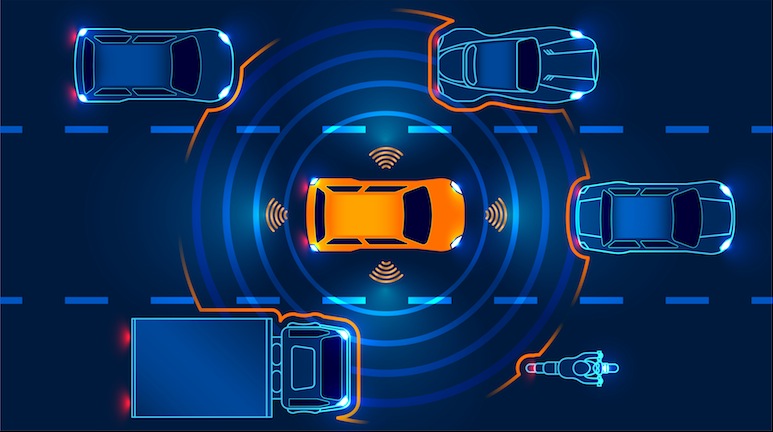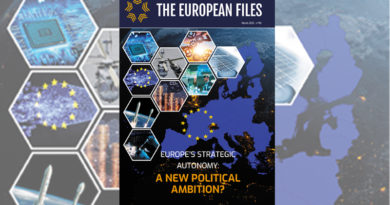
AI technology systems, robotics and autonomous vehicles
Artificial Intelligence (AI) may change our economy as profoundly as the steam power or electricity did in the past.
Many of us remember the world before another breakthrough invention the Internet. We are living proof that we are able to adapt and profit from technological revolutions.
Today AI is a reality. We are seeing it in products and services. Our role is to make sure that European citizens and businesses benefit from this emerging technology.
We have seen “smart machines” in science fiction literature and movies. These robots were not always the heroes. But real-world AI systems have little in common with those sci-fi villains.
AI offers innovative solutions for the benefit of all Europeans while opening new horizons for European industry.
We should be at the forefront of these technological developments and ensure they are taken up by the economy.
Let’s take autonomous cars as an example. AI is one of the key technologies used in autonomous cars. It is what makes cars understand their environment, for example by using shape recognition, and anticipate situations.
To ensure that this technology is developed in the EU, we adopted the AI strategy that will support the development and industrial deployment of AI solutions in Europe.
But autonomous vehicles require other technologies that still need to be developed. We need new sensors, high definition maps, precise positioning through Galileo and connectivity solutions.
So we put forward a dedicated strategy on automated mobility to support the development of these technologies and the relevant legal framework.
Ensuring that automated cars are safe will be essential for their acceptance. While in 2020s we expect quite widespread automated driving on motorways (e.g. truck convoying) and at low speed in cites (e.g. garbage trucks or valet parking), in 2030s the sector will be moving towards fully autonomous mobility.
In public transport, a quarter of trips in cities could be serviced by automated vehicles.
That’s why we proposed to reinforce the requirements on cars to address safety and liability concerns brought by autonomous driving in the future for example, there will be an obligation of having a black box fitted on automated vehicles to clarify liability in case of accidents.
The EU is one of the biggest car producers in the world, so we ought to lead in setting global standards for safe autonomous mobility. The existing framework is fit for purpose to meet the liability and safety requirements for autonomous cars developed by 2020.
The strategy on automated mobility outlines the changes necessary for autonomous cars expected on the roads by 2030.
We are well aware that safety and data protection are the biggest public concerns when it comes to AI in general.
We have to underline that our legal framework in these areas is already well developed. There is no legal vacuum as regards security or liability in the context of AI and robotics.
However, we cannot predict, as with any new technology, how AI will develop in the future. That is why we must keep up with AI, autonomous cars and robotics’ development in the future.
The existing rules on product liability make producers liable for their defective products regardless of whether there has been any negligence on their part or not.
The Commission reviewed the rules and has not identified any specific problems related to new technologies at their current stage.
However, there may be open questions in the future.
For this reason, we set up an expert group to help us work out a new guidance on product liability and to look at the broader liability implications of new technologies (including AI).
Again, this is why we proposed to fit black boxes on autonomous cars to clarify liability in case of accidents.
We already evaluated the Machinery Directive, which is the key regulatory safety framework for robots. Our findings show that the idea behind the Directive, providing essential requirements and leaving technical details to standards, is adapted to new innovations in a digital era.
Building on this evaluation, the Commission will examine whether legislative changes are needed, namely to address certain aspects of the coexistence between people and AI robots, not explicitly addressed by now.
Although AI and autonomous cars are morally neutral in itself, it may raise as any other profoundly transformative technology new ethical and legal questions.
To confront these challenges, we will present ethical guidelines on AI development by the end of 2018, which will be strictly based on EU’s Charter of Fundamental Rights and taking into account principles such as data protection and transparency.
A forum to discuss ethical issues for automated mobility will be established in the coming months.
We also explore the most critical industrial applications of AI, where we can create the highest added value for the EU, and keep European businesses ahead of the curve, e.g. in areas such as healthcare, pharmaceutical, chemicals, space and transport.
And we support large cross-regional investment projects on AI and Human Machine Interface.
We also do not forget that creation of many new jobs in the AI sector will be linked to disappearance of other jobs.
And therefore we are encouraging EU countries to prepare for this transformation, adapt their education systems and support labour market transitions.
Additionally, the EU’s next long-term budget (2021-2027) will strengthen EU’s support for training in advanced digital skills, including AI-expertise.
AI and automated cars are here today and they are not going away. Nobody knows for sure how they will develop. But we need to prepare and be flexible.
I am confident that our preparations will keep Europe at the forefront of exploiting this technology safely and to the advantage of all our citizens.




